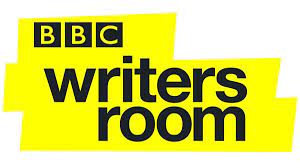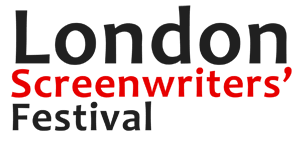Hi There,
This week : Part 2 of your TOP SCREENWRITING TIPS.
This past weekend was the 2nd weekend of the 2012 Channel 4 Screenwriting Course. In a weekend of readings and discussions of screenplays, so many of your tips came to mind.
I’ll be writing more about this year’s course in a future newsletter.
And this coming weekend Phil Gladwin and I are teaching our two-day screenwriting course in London.
We will soon be committing to some more courses in the Autumn – watch the website!
But here is the 2nd installment of:-
YOUR TOP SCREENWRITING TIPS
‘Do a second pass thinking only about sounds. They are always neglected in a first draft. Approaching your second draft with only this in mind makes the whole undertaking less daunting, and you inevitably enhance other areas of the script as well as sound on your pass.’
PS: This is something I must admit I’d never really thought about – but this seems like a different, novel way of approaching your work from a completely different angle – very interesting.
‘List every scene in a table, in order, detailing: number, time, location, action. Label structure-point scenes (according to whatever structure used). BEFORE you write the draft!‘
PS: A variation on the notion that you should plan you story structure meticulously, scene by scene, before you start writing the script. Different methods work for different writers but personally I strongly advocate this approach.
‘This tip is freely adapted from a trick Stephen King uses for prose fiction: After you finish the first draft of anything, go and write a super-short film script. Just a couple of pages, all new characters, and a constraint of some sort – only one word of dialogue in three pages, or it must feature a kiss, or take place all in one room. It’s a wee writing exercise to flex those imagination muscles that have been tied up in a single, long project finishing that bloody first draft. When the time comes to print out that first draft for its first proper read, you’ll come to it with far fresher eyes, simply because your head’s been in another story. Think of that short script as the screenwriting equivalent of a light sorbet, cleansing the palate of your imagination. Works for me!‘
PS: This sounds like a cracking idea.
‘Opinions are like arseholes; everyone has one. Listen to no one, just write and if you’re going to start, go all the way, otherwise don’t even start. If it’s bad you’ll know it, if its good others will know it.‘
‘My screen-writing tip is to just write your first draft and get it done. Only go back to it afterwards, I think it’s better to just get your writing down and get it finished. You will have re-writes and edits to make, but do them afterwards and not as you go along. I use a separate document for notes for instance, then go back over my screenplay afterwards adjusting it by using those notes.‘
PS: Yes, great advice. Get it written!
‘I can’t edit a blank page. I can’t edit a blank page. I can’t edit a blank page. I have that posted right next to my computer.‘
PS: A variation on the above.
‘Write when angry or about what most makes you angry – it’s always sincere.‘
PS: This is interesting. Finding ways \ techniques to release and encourage your creativity is so important.
‘Keep writing! Don’t fixate on only one project. It’s likely that baby will die, rot, become ridden with maggots – finally withering away to a grey dry thing of failure in your mind – and end up on the ever mounting “failure pile”. Don’t let your heart wither along with it! Yes, love the story. Love the world you’ve created. And try to make it what you initially intended and saw in that brief moment of inspiration – when your eyes fill with emotion, and tears, and your characters start talking their best lines at night and you forget half of them in the morning, even though you repeated the line over and over in your head. Always happens to me – I now sleep with a pen (much safer than the gun, and more practical). But when you finish a project, and you’re taking time out to gain a little objectivity on the whole thing, have another project waiting. And write it! Write more than just one thing. So when the person comes back and says “it’s not great”, (which they will over and over again – the bastards! I’m not bitter) that heart break won’t, hopefully, be there. You’ll be writing something else. Your next “masterpiece”!‘
PS: I love the passion here – and it’s true. Try to always have more than one project on the go. At the same time though, make sure you do full justice to every script you write.
‘A final quick tip, and this might be a little controversial. Don’t read too many scripts. For me, it does two things, I either get very smug – that’s rubbish! Ha! – or seriously scared – oh my god, his words drip with images, how can I write like this? And also, I want to write like me, not like somebody else who does something – a trick of word play or formatting – that’s amazing. Don’t be influenced. Be you.‘
‘This is a recent one for me, but since I started doing it, I haven’t looked back. It’s about creating the perfect environment for the different process’s of creativity. I have realised that sitting at my desk all day is not the best use of my time, depending on the task in hand. It’s about finding 3 locations.
Location No.1
When I start a new project, I like to do my outlining in public so I go to my favourite coffee shop and do all my outlining there. Here is where I explore the ‘big idea’; the theme, some story elements and some characters. This is where being out in the open is extremely helpful as often you will latch onto people surrounding you and extrapolate your own characters from them.
Location No.2
When it’s time to knock out my beats, I do this on the sofa at home. I’m still away from my desk and my computer but I’m close if needs be. On the sofa is where I feel able to be secure and comfortable and I usually use yellow ruled paper and pen to do this. It’s important that this still doesn’t feel like work and it allows me to be creative. Up until now, it feels like I haven’t done any work – I’ve been in the coffee shop and sat on my arse on the sofa!
Location No.3
When the beats are done, it’s time to get serious and this is the time that I sit at my desk. Here I hammer out the scenes and dialogue and concentrate on getting the first draft down. When I have that precious first draft, I then take it back to Location No.1 and begin the process of editing. (It’s amazing how being in a public place changes your attitude to your work.)
Since I started this (3 projects ago) – I have yet to find myself staring at a blank screen. All the big bits of work have been broken down into chunks and done in different locations.‘
PS: This is really interesting and very perceptive. Sometimes sitting in front of your computer screen is the worst place to be when writing. Find the environment \ method that works for you – don’t sit suffering in front of your computer screen if it’s not happening.
‘When I proof read for spelling or grammar errors, I start at the end and work my way backwards, I find if I go the other way then I just get caught up in the story and miss a lot.’
PS: Yes, great advice. Proof-reading is important – and it’s so hard to re-read your own work with an objective eye; so techniques of this sort are really helpful.
‘If you have to write – just do it! Keep writing and never give up!‘
‘Stop endlessly checking your emails/phone/FB, already, and get on and do some writing! Then 45 minutes later, have a cup of tea to celebrate.‘
PS: Yes, another reason why writing at your computer isn’t always the best location – the temptations of the internet etc can be very distracting!
‘This is not mine but I’d love trying it – it would stop me being too precious with my characters.
“Hurt the characters you care about, and give the lucky breaks to the characters you hate. If the audience is outraged, good. That means they care.”
PS: Yes, a variation on making your antagonists as credible and empathetic as possible.
‘Always work out what is the emotional journey you want your protagonist to take, before embarking on writing a screen play.’
‘Try to envisage your final scene before you write your first scene. Try to imagine what the very last emotion you want your Cinema / TV audience to be left with as your credits roll. Then take a deep breath and write that final scene just as it plays out in your head. Of course you know and I know it may bear little resemblance to the final scene in your final draft, but that doesn’t matter. What you have done is plant the seed of a great dénouement which in itself will put your story head and shoulders above the thousands of scripts that have no story resolution and no chance of ever being remembered.‘
PS: This is great advice. And actually advice I gave to all 3 of my Channel 4 course writers last weekend! Whatever the format (single film, serial, series) always have a strong idea of where the story ends before you start. (OK so in a seies it may just be the end of series one. But when you’re writing episode one, it should be deeply informed by how you know things end at the endof episode 6, 12 – or however many episodes your series is. The best recent example for me of this was THE BRIDGE. 10 hours of drama, opening with a corpse dumped on the spectacular road bridge that runs between Sweden and Denmark. And where did the series end? On ‘The Bridge’ of course. There was something really pleasing about the symmetry of the series.
‘My most recent favourite words of wisdom are from Alan Bennett: ‘You do not put yourself into what you write, you find yourself there.‘
And finally…
‘Never give up‘
Until next week
Happy Writing!
All the best
Phil
PHILIP SHELLEY
www.script-consultant.co.uk
June 15th 2012






















